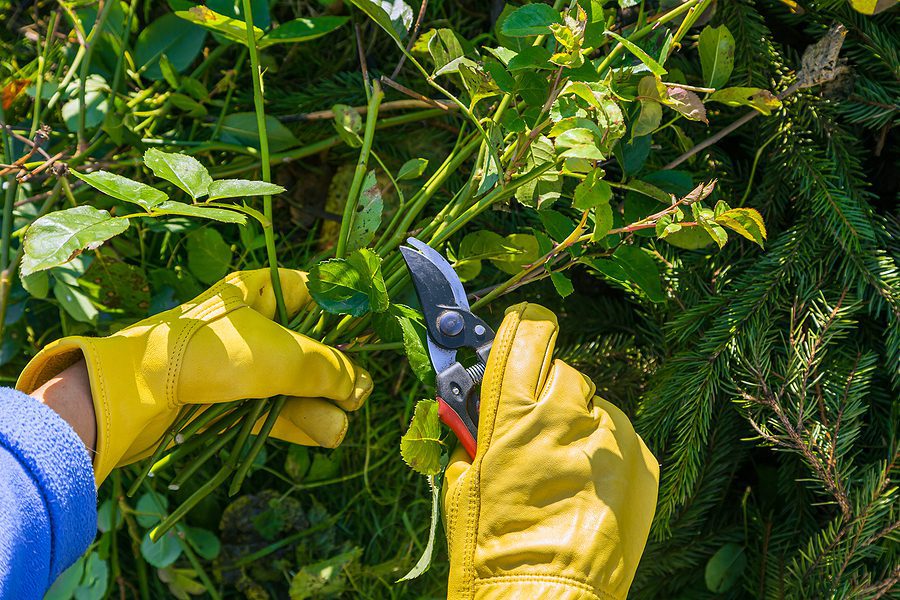Basic Gardening Tips Every Homeowner Needs to Know

Gardening is much more than just growing plants. Once your plants are in the ground, it is your responsibility as a gardener to take care of them, ensuring that they get enough water and nutrients, have enough support, and are not growing in opposition to other plants or weeds. Taking care of your garden entails treating each plant as an individual; what works for one cannot work for another.
How to Take Good Care of your Garden
One of the most essential aspects of garden maintenance is giving your plants enough water. via a process called transpiration, plants lose moisture from their leaves; thus, it’s critical to make sure there is sufficient moisture in the soil for them to reabsorb via their roots. But moisture from the soil also evaporates in warm temperatures. Because of this, you’ll need to water the soil more often in sunny regions than in shaded ones and on hot summer days compared to mild spring or fall circumstances.
Since they have smaller root systems and absorb less moisture than older, established plants, seedlings and younger plants need more frequent watering. You will need to give them extra water in the early days after planting since planting and moving plants harms the microscopic hairs on their roots, which are responsible for absorbing water. Container-grown plants have smaller roots and less soil available for absorption of moisture. Therefore, in addition to requiring more watering than established plants in your border, they also Additionally, you’ll note that plants in a sunny border will need more watering than plants in a shaded area.
When it’s hot outside, it’s ideal to water in the evening to give the plants time to “drink” overnight before the temperature rises again the following day. It’s a good idea to water in the morning in cold or overcast conditions so that plants have time to dry out before dusk falls. In hot weather, try to keep your hands off the leaves to prevent them from scorching.
Important Tip –
Watering your plants frequently is beneficial for bees and other pollinators since well-watered plants provide more nectar in their blossoms. This is particularly true in hot weather when plants living in the wild will also produce less nectar.
Supplying Plants with Food
Plants use their roots to absorb minerals and nutrients in addition to water. These include potassium (K), which promotes the development of flowers and fruits, phosphorus (P), which promotes the development of roots, and nitrogen (N), which supports the growth of leaves. These are thought to be the primary nutrients needed to maintain the health of plants.
In the natural, decaying plant matter such as leaf litter releases nutrients back into the soil; but, in our gardens, these materials are often burnt or picked up and placed in the green bin or compost heap. The nutrients in the soil are progressively lost due to this process, thus, to support plant growth, it’s critical to replenish them by feeding the soil or plants.
To fertilize your plants, you can use either organic or non-organic fertilizers. The ingredients used in organic fertilizers are derived from plants or animals and have the added advantage of promoting earthworm activity and soil microbial life, which maintains soil health and plant health. These consist of well-rotted manure and feeds made of nettle or comfrey. Synthetic chemicals are used to make inorganic fertilizers.
Visit our feeding plants sections for additional information on providing nourishment for your plants, including details on different kinds of liquid feed, compost, manure, slow-release fertilizers, and green manures.
Pruning the Plants
While some trees and shrubs can grow happily without interference, most eventually need to be pruned or trimmed back. Simply said, pruning is the process of chopping off portions of a plant to control its size, promote a certain growth pattern, produce more fruit, blooms, or stems, or get rid of unhealthy or dead material.
Pruning plants is a daunting task for many novice gardeners. However, pruning is neither hard nor intricate. For many plants, it is sufficient to simply cut off any dead, diseased, broken, crossing, or crowded branches.
Deadheading
By preventing wasted flowers from going to seed, deadheading helps plants to produce new blossoms. Roses, herbaceous perennials, and bedding plants can all be kept in bloom far into the fall by routinely deadheading them. Deadheading bulbs also diverts the plant’s energy from seed production to blooming the following year.
Trimming and Clipping
After planting, new hedges need to be frequently clipped for the first several years. Known as “formative pruning,” this is usually done in the winter or early spring. Typically, formative pruning is chopping downside branches of the hedge until the appropriate height is reached. Cut fresh evergreen hedges in the spring and new deciduous hedges in the winter.
It’s a good idea to trim your hedge annually after formative pruning, while formal hedges can need twice-yearly trimming to maintain their elegant appearance. Pruning wildlife hedges should be done every other year since it can remove some butterfly eggs from plant stems. Prune this summer, but during nesting season (ideally in September), be sure to properly inspect hedges for nested birds.
